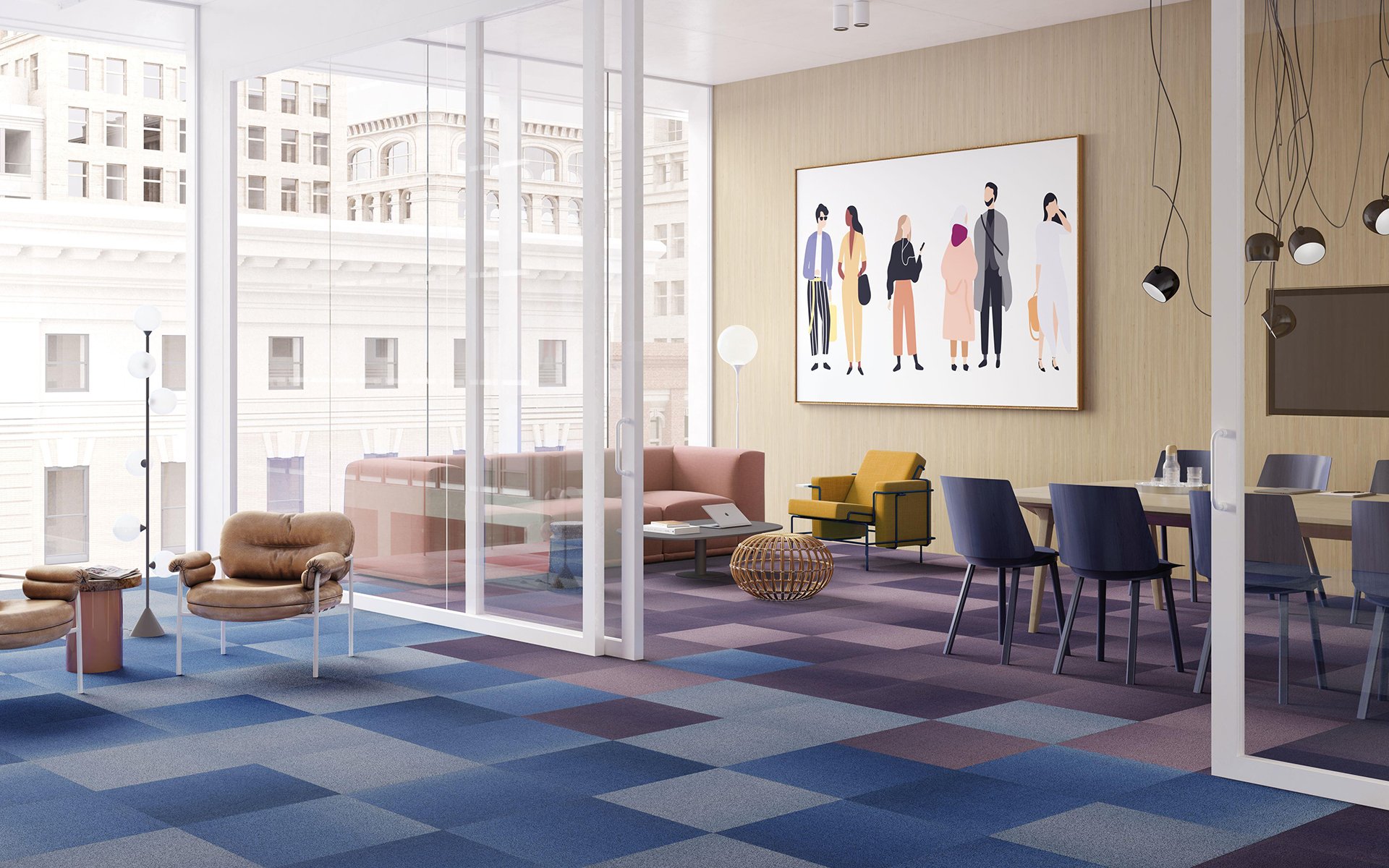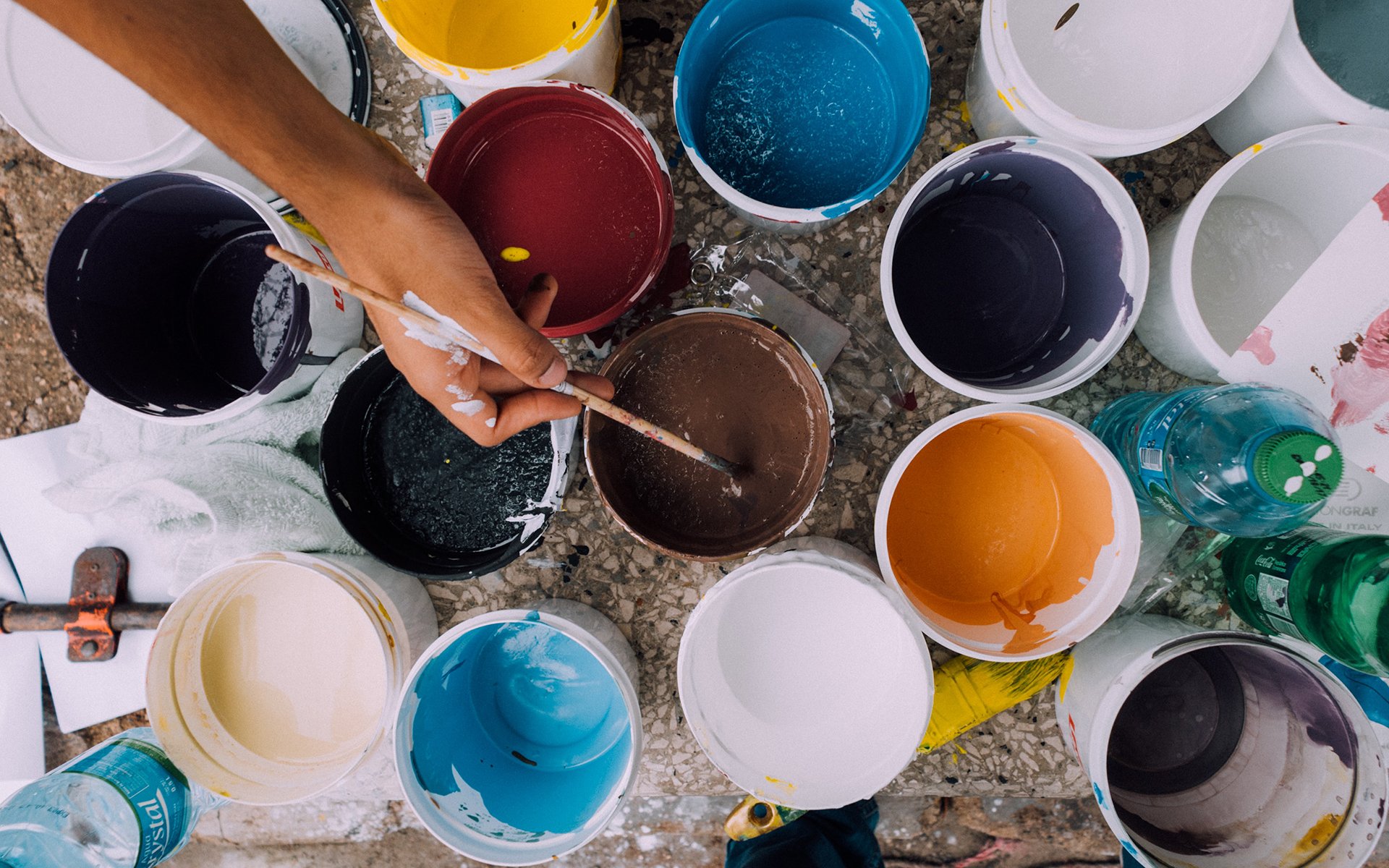When it comes to certain products, particularly foods, labels are crucial as they tell you exactly what you are getting and provide a level of confidence in your purchase. So why not stick labels on other products that we purchase – products that also enter our body through touch, skin, inhalation, surroundings, and more, and have an equally great effect on our well being?
If you ever go down the internet rabbit hole when researching health and your immediate environment or space, you may stumble across some downright scary info. From seemingly ‘mild’ headlines, such as ergonomic issues, to downright frightening ones such as ‘your home is causing you cancer’! It can feel overwhelming. Is there any truth to these stories? To what extent has the design industry learned and evolved to accommodate a better living environment, and how much of these articles still stand true today?
Above: Shaw Contract’s Ecoworx tile
Labelling the Product
Many designers as well as users have been actively advocating for material transparency. In response to this, manufacturers have come up with their own versions of the food product label. Plus, getting products certified builds great trust and confidence.
Manufacturers have stepped up to the challenge and in many cases, raised awareness about products that have harmful effects. Furniture brands, such as Humanscale, and carpet tile producers, like Shaw Contract, have taken the lead in banning damaging practices.
There has been a lot of evolution in literature in this field, and several brands have spoken up about the harmful effects of toxic materials, making the masses increasingly invested in the cause. As a result, some manufacturers have reformulated their materials and streamlined their production to ensure a healthier you. The Living Product Challenge helps immensely, plus ‘Declare’ is a transparency platform and product database online that allows you to search for healthy products with clear labels. Some of the products certified under this list are Humanscale’s Diffrient Smart Ocean Chair and Teknion’s Around Chair.
Avoiding VOCs
Most people are aware of the dangers of using toxic products. However, the extent of that knowledge had been limited primarily to paints.( Remember, the whole uproar about weird smelling paints and painting materials, and their harmful effect, not too long ago?). There still continues to be much conversation about VOCs (Volatile Organic Components) in paints, and consumers have realised the adverse effects of these chemicals. Jotun paints, for example, now releases a data sheet with open information about the materials used.
However, it’s not just paints, but also surfaces, furnishings and even lighting, that can negatively impact a person’s health. Chlorofluorocarbons, formaldehyde, etc, and many other red list chemicals are commonly used in interior product manufacturing. But through systematic education, legislatures, and the design community taking an active stand against harmful products, this can be turned around.
Key Challenges and Considerations
One of the primary challenges for designers and manufacturers is getting to spec the product to the project due to the financial capabilities of the client or lack of options in designs. However, some manufacturers are investing in R+D to counter this by using organic materials and coming up with sustainable options that could also prove cost effective.
What happens to certifications that expire? In this ever changing world, where we constantly learn that the standard has a way of changing, what then should the client do to ensure that the product has longer usage with an older certification? A process needs to be in place for the re-certification of the product, and why the label does not hold up to the present standards needs to be explained. This does not mean discarding a product the minute the standards change, but instead cultivating a habit of understanding what the standards are and why they should or should not change.
Another key aspect is the pricing of these products. A number of people equate sustainability and certified products to higher costs. What’s important to remember is that it’s better to invest in the right product now than have to pay large health bills later! This revolutionary change in placing the consumer/human at the centre of the design process has led to renovated spaces that are much more homely and safe.
Are You In the Know?
Knowing what’s in a product is not enough; it is equally important to understand how to best utilise the product according to the specs provided. Think about having an ergonomic chair, only to raise it at a height, and then bend down and work!
A cluttered environment has been proven to drain energy and negatively impact our overall mood and self image. It’s great to get the healthiest and safest piece of furniture in the world, but at the end of the day, if the product is only used in a crowded office environment, that leads to an epic design fail. Educating the client on the right usage of the product and its maintenance is crucial to the success of the space.









